

(By Mo Tingting)Within 20 years, Bill Gates has created Microsoft and made it one of the most successful technology companies in the world. Given enough money and 20 years, what kind of dream will you fulfill? A recluse artist named Song Peilun wholeheartedly built a legendary castle called Yelang Valley to reimagine ancient culture in a secluded area. Where others saw as a wasteland, Song the soil to grow his utopia dream in Guiyang, China. Off the beaten path, Yelang Valley is a super cool place with arching stone stairways, towering castles and glowering ancient masks, attracting worldwide attention.
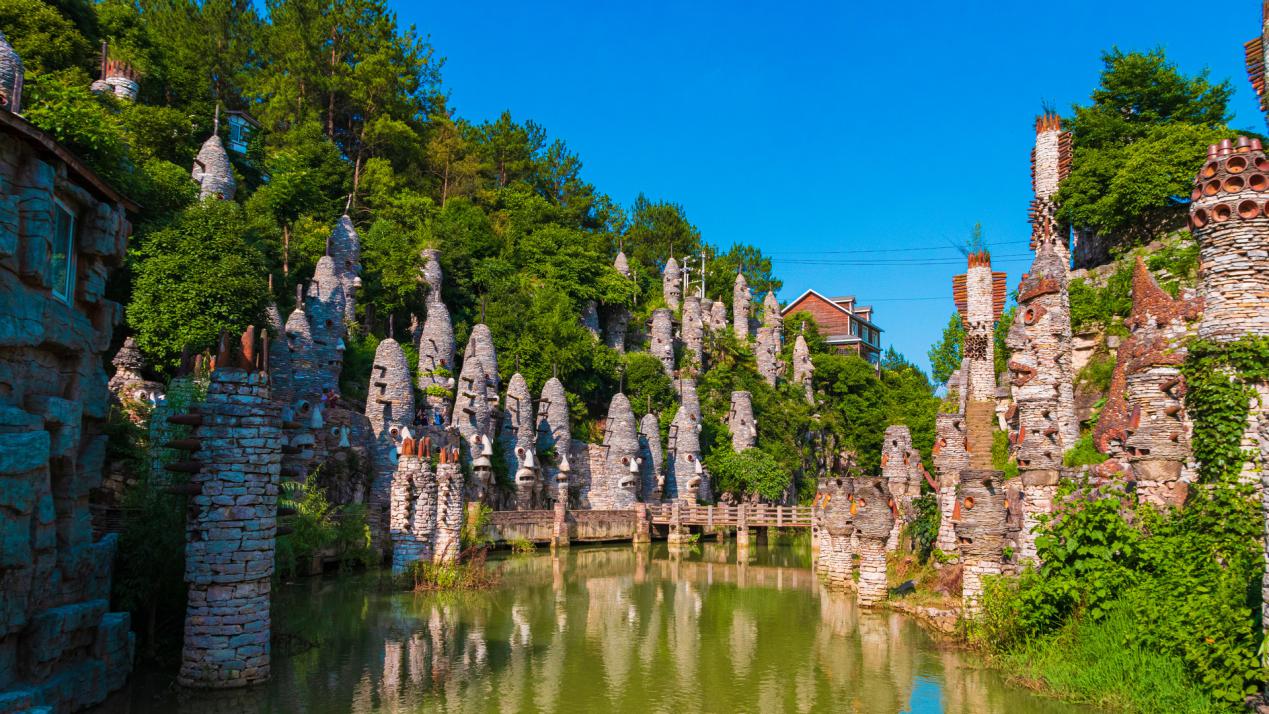
Gazing into these giant rocky creatures
In increasingly commercialised China, where domestic tourism is booming along with the theme park industry, Yelang Valley becomes a sight to behold. Yelang Valley is situated in the east of Guizhou Province. Doupeng Mountain, on the opposite side of the Yelang Valley, is said to be the residence of a descendant of the king of Yelang. Yelang was the first state in southwest China established by the ancestors of ethnic groups, and was once wealthy and powerful in the region in history, rich in natural resources and regional cultural characteristics. Experts believe that many ancient cultures were rooted here, but there are unfortunately no architectural remnants left. Not much is known about Yelang, and their sudden demise around 26 BC remains a mystery.
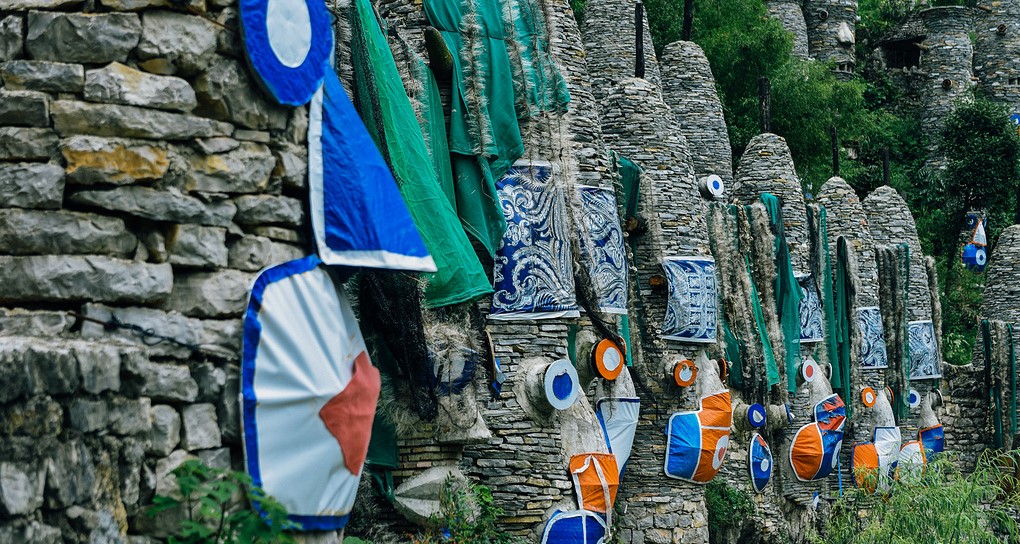
Members of this tribe hallowed many different traditions. Dancing with Nuo masks was the brightest one. Nuo, also connected with the “Nuo sacrifice” or “Nuo ceremony”, was originally a Chinese folk religion with its system of temples, rituals, orders of priests and gods, which was interethnic and had been practiced across central and southern China. The masks were thought to hold power against evil spirits at sacrificial rituals during ancient times. It gradually developed into a dance drama and became more of a recreation performance than a ritual during the Tang Dynasty (618-907). The most complete set of Nuo culture can still be found in Guizhou because Guizhou has been in a relatively closed state for a long time, so that some ancient culture could be preserved. Ancestors thought that people didn’t understand the nature of life in the past. Through Nuo, they were able to communicate with heaven and earth. The performers were considered the bridges between them.
Once you arrive at the Yelang Valley, you will step into a different world. Visitors will be enchanted by the natural mountains, river streams, cliffs and waterfalls. Looking down from the top, Yelang Valley looks like a deep and unfathomable crack. Looking up from the bottom, the cliffs seem dangerous and thrilling. Stone faces the landscape of the hillside, giving an impression of emerging from the soil of the hillside. Their eyes, forever open, gaze across the lush landscape. A maze of craggy towers and totems reach up to the skies. All of these are interspersed with lush, green trees, shrubs and grass, and balanced on the bank of a meandering river. Although much smaller and less palatial, Yelang Valley bears some resemblance to Angkor.
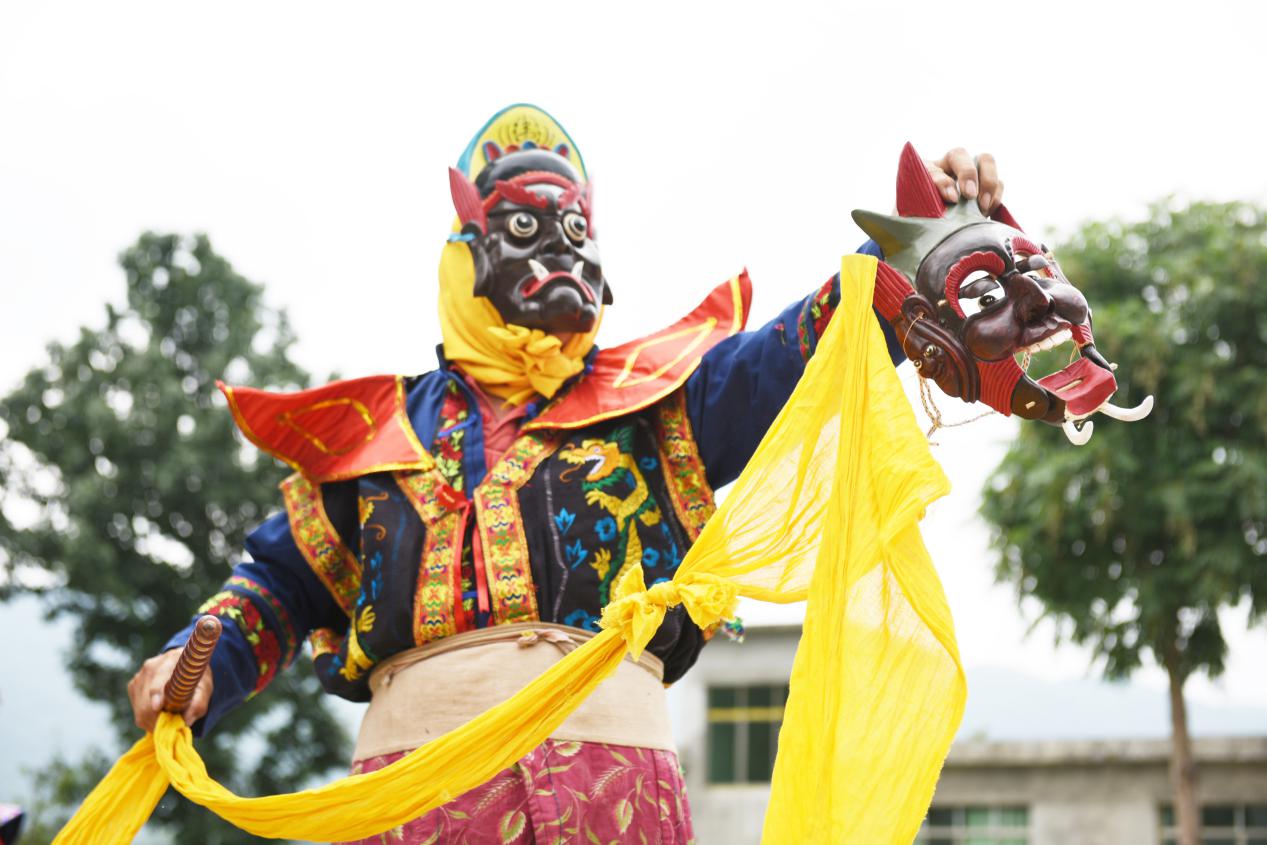
The stunning structures are the works of Song Peilun, an artist, cartoonist and former professor. Song said that his work was intended as a homage to Yelang tribes. Based on local mountain shapes, river directions and its original state, Song designed and built the stone castle with the theme of Nuo opera's facial makeup, masks and characters. Featuring cultural elements unique to the ancient Yelang, the totem pillars and sculptures of various sizes used rocks, stones and other materials as they were abundantly available and would, therefore, be a cheap and environmental-friendly choice.
The gatekeeper of the mystical Yelang Valley
Song Peilun is slim, with long, loose hair, and always dresses in a traditional tunic and scatters old proverbs throughout his sometimes-hard-to-decipher discourse. He grew up in a small village and often felt homesick for village life. Song began building Yelang Valley after visiting the Crazy Horse Memorial, a mountain monument dedicated to a Native American warrior, on a trip to the United States. He quit his job as a professor and purchased a then-isolated plot of land. His dream was to create something monumental, mystical, ancient and timeless.
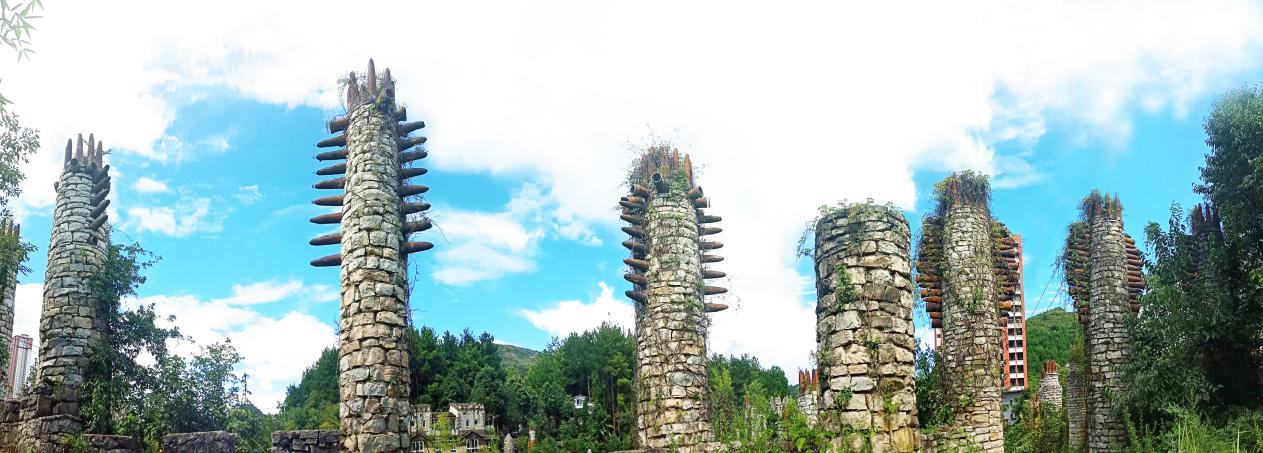
With this inspiration, Song worked with the locals who are knowledgeable in stonework and pieced together giant stones. The villagers were greatly touched by the enthusiasm of Song and tried their best to bring his visions to life. The local villagers are all from ethnic minorities — Miao people and Buyi people. They use stones to build their houses so they are stone experts. Where the stone is too sharp, they would spare no effort to blunt it. Where the faces of the sculpture were too long, they would shorten them. The structures might be crude in appearance but crude doesn't mean poor. “Art school students wouldn’t create the same effect. You can’t call someone a master just because they went to university,” said Song.
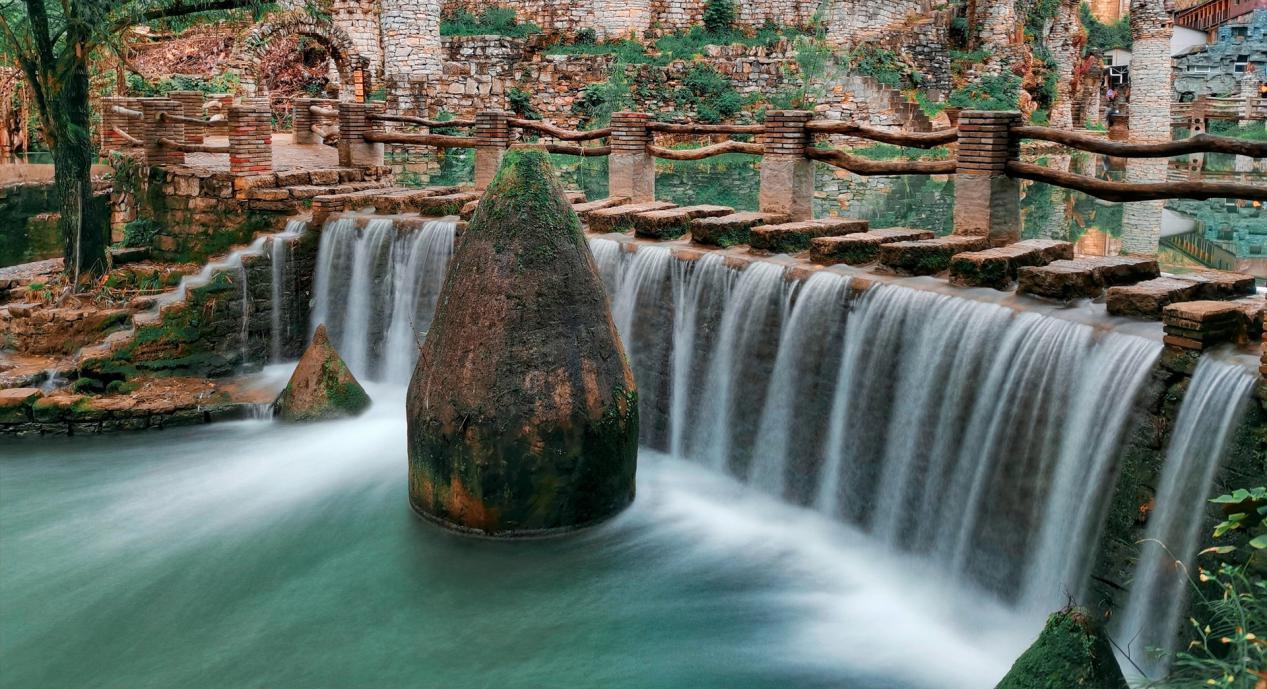
After spending over 20 years designing the sprawling village of stone figures, he is hailed as “the father of Yelang Valley”, “the dream seeker who gave up everything and supported his hometown”, “the protector of folk and ethnic culture”, and “the foolish old man of modern times”. In 2017, the documentary titled Song Peilun: The Man Who Built a Chinese Utopia was released on BBC. Since then, Yelang Valley started to attract public attention from all over the world. It has become Chinese famous singer Gong Linna’s wedding place and the habitat of popular Chinese folk singers. Even some well-known TV series actors have come there to shoot their TV series. The story of Yelang Valley was passed via the media to the world.
Yelang Valley is a project far from completion. Standing on the riverside, Song silently gazes across the stream that flows through his valley, awaiting an uncertain future. He is concerned about the increasing urbanisation in the area, but believes his castle will survive and carry a message to future generations.
Tips:
Source: China-ASEAN Panorama
桂ICP备14000177号 Copyright@2006-2013 Guangxi China-ASEAN Panorama Magazine Agency Co., Ltd. All Rights Reserved